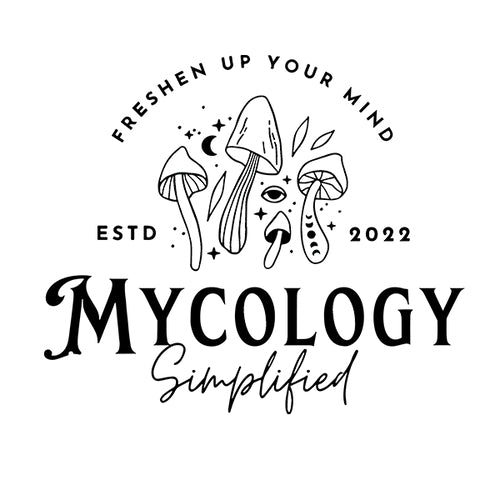
Long-Term Mycelium Storage: Castellani Water Method vs Agar Slants
Compartir
Storing mushroom mycelium cultures for the long term is a crucial part of maintaining a healthy, consistent growing operation. Whether you’re a new hobbyist or a seasoned mycologist, having a reliable way to preserve cultures can save you time, protect your genetics, and reduce contamination risks.
In this guide, we’ll compare two proven storage methods: the Castellani water method and traditional agar slants. You’ll learn how each method works, how to prepare them step by step, their pros and cons, and why the water method often comes out on top for ease and longevity.
Why You Need Long-Term Mycelium Storage
When left on agar plates, mycelium will continue growing until it uses up all the nutrients or dries out. Plates stored in the fridge may last a few months at best before the media begins to dehydrate or contamination sets in. Even well-maintained plates are rarely viable beyond 4–7 months.
Repeatedly transferring cultures to new plates to keep them alive also increases the chance of contamination and can lead to genetic drift or sectoring—undesirable mutations or changes in growth caused by stress or suboptimal conditions.
That’s why many growers turn to longer-term storage solutions like slants or the water method.
Method 1: Agar Slants

What Are Slants?
Agar slants are test tubes filled with nutrient agar that’s solidified at an angle, creating a sloped surface. This increases the surface area for growth and reduces drying compared to a flat agar plate. Slants are often kept in a fridge to slow the mycelium’s growth further and can extend the culture’s life by 6 to 18 months, depending on the species and storage conditions.

Why Use Slants?
- They take up less space than plates
- Colonies grow slowly, so they don’t overrun the media too quickly
- Tubes seal better than dishes, reducing evaporation
- Cultures are easy to inspect visually
How to Prepare and Use Agar Slants
Supplies:
- Sterile 50mL slant tubes with rack – available here
- Agar powder (e.g., Malt Extract, Potato Dextrose, or Light Malt Yeast Agar)
- Pressure cooker or autoclave
- Scalpel or inoculation loop
- Still-air box or flow hood
- Parafilm or foil
- Prepare the Agar: Mix a low-nutrient agar medium. Pour into tubes halfway and cap loosely.
- Sterilize: Pressure cook at 15 PSI for 20–30 minutes. Cool tubes at an angle.
- Inoculate: Transfer a small wedge of mycelium from a plate. Seal tube.
- Colonize: Let grow at room temp until fully colonized.
- Store: Refrigerate at 2–5°C (36–41°F). Check periodically.
- Maintain: Subculture every 6–12 months.
Pros of Agar Slants
- Easy to inspect through the tube
- More compact than plates
- Proven method for decades
- Useful for frequently accessed cultures
Cons of Agar Slants
- Eventually dry out
- Require periodic transfers
- Risk of genetic drift or contamination
- More labor and supplies than water storage
Method 2: Castellani’s Water Method

What Is It?
The Castellani method stores clean mycelium in sterile distilled water, sealed in airtight containers. With no nutrients or oxygen, the mycelium becomes dormant and stable for years, even decades.
How to Use the Castellani Water Method
Supplies:
- Sterile distilled water
- Conical tubes for Castellani water storage – click here to order
- Colonized agar or grain cultures
- Scalpel or tweezers
- Pressure cooker or autoclave
- Still-air box or flow hood
- Labels or parafilm
- Sterilize Water and Containers: Fill halfway, sterilize at 15 PSI for 20–30 minutes, and cool.
- Prepare Mycelium: Cut 5 mm pieces of clean, active mycelium.
- Transfer: Add 3–6 pieces to each vial and top off with sterile water.
- Seal and Label: Tighten caps and mark date/strain.
- Optional: Let sit for 3–7 days to confirm clarity.
- Store: Room temp or refrigerated; avoid freezing.
- Revive: Transfer piece or water to new agar to grow.
Why It Works So Well
The mycelium becomes dormant in water due to lack of oxygen and nutrients. This reduces aging, limits contamination risk, and preserves genetics extremely well.
Pros of the Water Method
- Longest shelf life (5–20+ years)
- No re-plating required
- Low cost and maintenance
- High genetic stability
- Minimal contamination risk
- Room temperature or fridge storage
Cons of the Water Method
- No visible growth during storage
- Requires sterile technique at setup
- Viability only confirmed upon revival
Side-by-Side Comparison
| Feature | Agar Slants | Castellani Water Method |
|---|---|---|
| Shelf Life | 6–18 months | 5–20+ years |
| Maintenance | Regular transfers | None |
| Cost | Moderate | Very low |
| Contamination Risk | Moderate | Low |
| Storage | Fridge required | Room temp or fridge |
| Genetic Stability | Lower (risk of drift) | High |
| Best Use | Short-term access | Long-term backup |
Final Thoughts: Why Water Wins
Agar slants are a reliable choice for active cultures and short-term use, but the Castellani method offers a long-term solution that’s easier, cheaper, and lower maintenance. It’s ideal for creating backups of your best strains and for preserving valuable cultures without constant upkeep.
Need tubes for your own slants or Castellani setup? Click here to grab our 25-pack of sterile 50mL conical tubes with red caps and rack. Perfect for both storage methods, and they ship fast!

